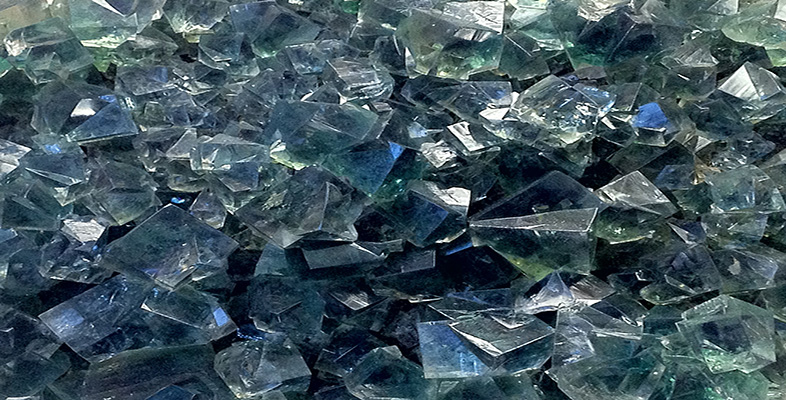3 Rock-forming minerals
3.1 Introduction
More than 90 chemical elements occur naturally on Earth. You might expect them to combine in ways that would form an almost infinite number of minerals. In fact, the total number of minerals discovered is only about 4000, and the number of commonly occurring rock-forming minerals is very much smaller. One reason for so few common minerals is that most elements have low abundances and rarely occur in sufficient quantities to combine and form minerals. Thus the more widely occurring rock-forming minerals represent combinations of a small number of readily available ingredients, those elements which are more abundant in the Earth's crust and mantle, as listed in Table 4.
| Element | Symbol | % in crust (by mass) | % in mantle (by mass) |
|---|---|---|---|
| oxygen | O | 46.6 | 44.6 |
| silicon | Si | 27.7 | 21.4 |
| aluminium | Al | 8.3 | 2.2 |
| iron | Fe | 5.0 | 5.9 |
| calcium | Ca | 3.6 | 2.3 |
| sodium | Na | 2.8 | 0.2 |
| potassium | K | 2.6 | trace |
| magnesium | Mg | 2.1 | 22.7 |
| others | 1.3 | 0.7 | |
| total | 100.0 | 100.0 |
From Table 4, it is clear that oxygen and silicon are by far the most abundant elements in the crust and mantle. Minerals containing silicon combined with oxygen are called silicate minerals, and are the single most important mineral group - making up over 90% of the Earth's crust and almost all of the mantle.
The non-silicate minerals (of which calcite is perhaps the most familiar example) contain other chemical groups, such as carbon combined with oxygen (carbonates) and metals combined with oxygen (oxides) or sulfur (sulfides).
The following sections contain descriptions of the crystal structures of important rock-forming minerals. Note: you would not normally be expected to remember specific details of the structures, merely the essential attributes of, and differences between, the structures of the main mineral groups.
